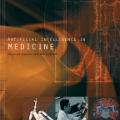Autonomous agents such as self-driving cars or parcel robots need to recognize and avoid possible collisions with obstacles in order to move successfully in their environment. Humans, however, have learned to predict movements intuitively and to avoid obstacles in a forward-looking way. The task of collision avoidance can be divided into a global and a local level. Regarding the global level, we propose an approach called "Predictive Collision Management Path Planning" (PCMP). At the local level, solutions for collision avoidance are used that prevent an inevitable collision. Therefore, the aim of PCMP is to avoid unnecessary local collision scenarios using predictive collision management. PCMP is a graph-based algorithm with a focus on the time dimension consisting of three parts: (1) movement prediction, (2) integration of movement prediction into a time-dependent graph, and (3) time and risk-dependent path planning. The algorithm combines the search for a shortest path with the question: is the detour worth avoiding a possible collision scenario? We evaluate the evasion behavior in different simulation scenarios and the results show that a risk-sensitive agent can avoid 47.3% of the collision scenarios while making a detour of 1.3%. A risk-averse agent avoids up to 97.3% of the collision scenarios with a detour of 39.1%. Thus, an agent's evasive behavior can be controlled actively and risk-dependent using PCMP.
翻译:自动驾驶汽车或包裹机器人等自动代理物需要认识并避免可能与障碍碰撞,以便在其环境中成功移动。 然而,人类已经学会了直观地预测运动,避免障碍,避免碰撞的任务可以分为全球和地方一级。 在全球一级,我们提议了一种称为“预防性碰撞管理路径规划”(PCMP)的方法。 在地方一级,避免碰撞的解决方案需要用来防止不可避免的碰撞。 因此,PCMP的目的是通过预测性碰撞管理避免不必要的局部碰撞情景。 PCMP是一种基于图表的算法,重点是由三个部分构成的时间层面:(1) 移动预测,(2) 将移动预测纳入一个取决于时间的图表,(3) 时间和风险-风险-路径规划。该算法将寻找一条最短的道路与问题结合起来:是否值得避免可能的碰撞情景?我们评估了不同模拟情景中的规避行为,结果显示风险敏感剂可以避免碰撞情景中的47.3%的碰撞情景,同时进行移动1.3% 风险-风险-风险-风险-风险-风险-风险-风险-风险-风险-风险-风险-风险-风险-风险-风险-风险-风险-风险-风险-风险-风险-风险-风险-风险-风险-风险-风险-风险-风险-风险-风险-风险-风险-风险-风险-风险-风险-风险-风险-风险-风险-风险-风险-风险-风险-风险-风险-风险-风险-风险-风险-风险-风险-风险-风险-风险-风险-风险-风险-风险-风险-风险-风险-风险-风险-风险-风险-风险-风险-风险-风险-风险-风险-风险-风险-风险-风险-风险-风险-风险-风险-风险-风险-风险-风险-风险-风险-风险-风险-风险-风险-风险-风险-风险-风险-风险-风险-风险-风险-风险-风险-风险-风险-风险-风险-风险-风险-风险-风险-风险-风险-风险-风险-风险-风险-风险-风险-风险-风险-风险-风险-风险-风险-风险-风险-风险-风险-风险-风险-风险-风险-风险-风险-风险-风险-风险-风险-风险-风险-风险-风险-风险-风险-风险-风险-风险-风险-风险-风险-风险-风险-风险-风险-风险-风险-风险




